-
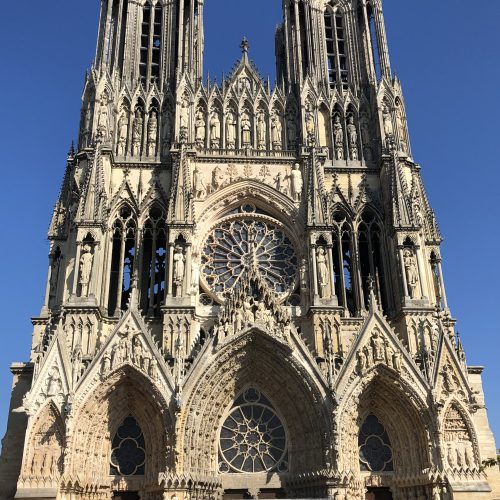
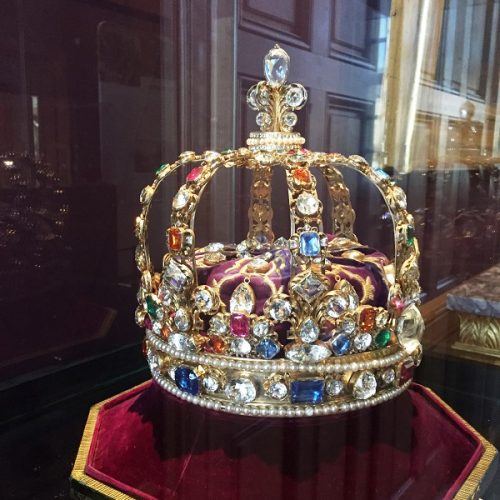 Spend a day in Champagne following one of two different routes and have a fabulous experience. This northeast region of France is noteworthy for its long history of winemaking and stories of resilience throughout the First World War. One itinerary will prioritise the Champagne countryside with typical villages and tastings at small wine growers. The other will start in Reims, the capital of Champagne, on the trail of its long historical and architectural heritage before visiting some of the most famous Champagne houses.
Spend a day in Champagne following one of two different routes and have a fabulous experience. This northeast region of France is noteworthy for its long history of winemaking and stories of resilience throughout the First World War. One itinerary will prioritise the Champagne countryside with typical villages and tastings at small wine growers. The other will start in Reims, the capital of Champagne, on the trail of its long historical and architectural heritage before visiting some of the most famous Champagne houses. -
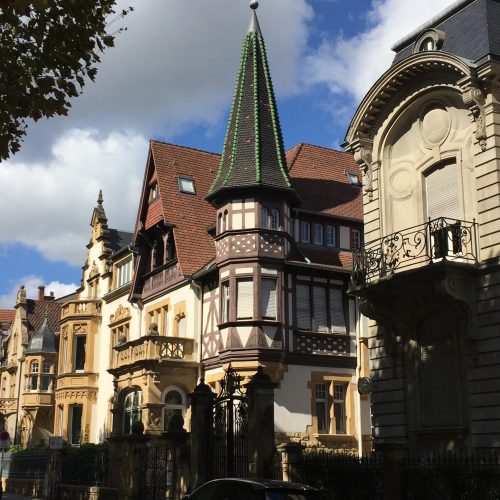
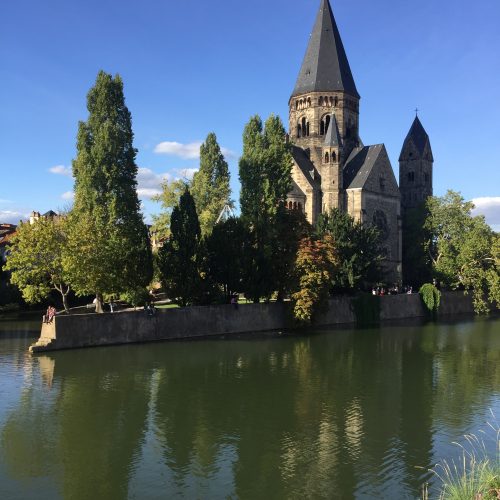 The capital of (German) Lorraine has a lot to offer! From Pompidou brand new modern art cener to the city's history museum, where an amazing Medieval objects are presented in rare and unusual buildings. The stroll through the city will show the river banks, but also towers and walls, reminding the great military role as well as the Imperial quarter, dating the German domination up till 1918. Surprising and unusual houses are also on the way around the medieval district surrounding the beautiful Cathedral (with windows by Chagall), to more traditional French style streets.
The capital of (German) Lorraine has a lot to offer! From Pompidou brand new modern art cener to the city's history museum, where an amazing Medieval objects are presented in rare and unusual buildings. The stroll through the city will show the river banks, but also towers and walls, reminding the great military role as well as the Imperial quarter, dating the German domination up till 1918. Surprising and unusual houses are also on the way around the medieval district surrounding the beautiful Cathedral (with windows by Chagall), to more traditional French style streets. -
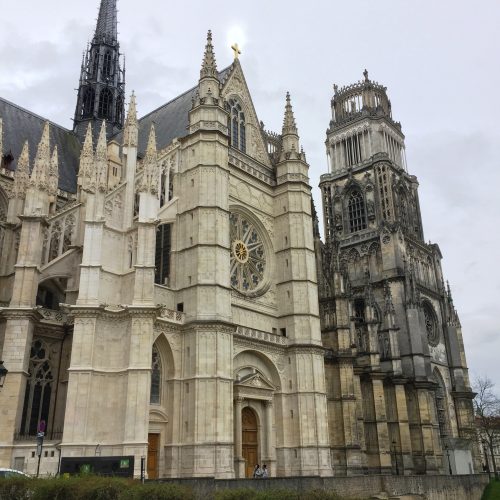
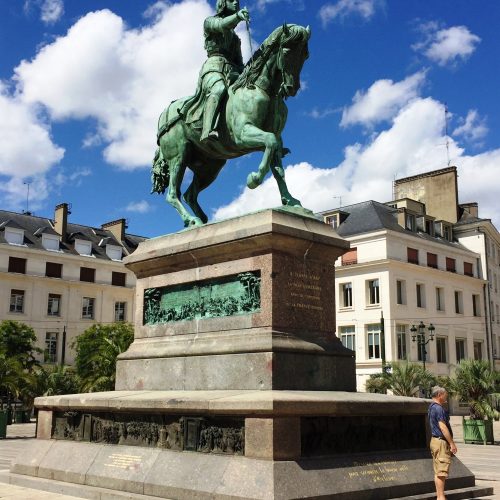 Just an hour away from Paris by train, Orleans lies quietly on the Loire river. If half the city centre was destroyed during the last war, large parts still show distinctive medieval and Renaissance buildings, including beautifully renovated hotels particuliers, now turned into museums. The tour will also show the Cathedral, the Loire river banks and other interesting and lesser known elements. The story of the local glory, Joan of Arc will be highlighted in the house she slept in when liberating Orléans.
Just an hour away from Paris by train, Orleans lies quietly on the Loire river. If half the city centre was destroyed during the last war, large parts still show distinctive medieval and Renaissance buildings, including beautifully renovated hotels particuliers, now turned into museums. The tour will also show the Cathedral, the Loire river banks and other interesting and lesser known elements. The story of the local glory, Joan of Arc will be highlighted in the house she slept in when liberating Orléans. -
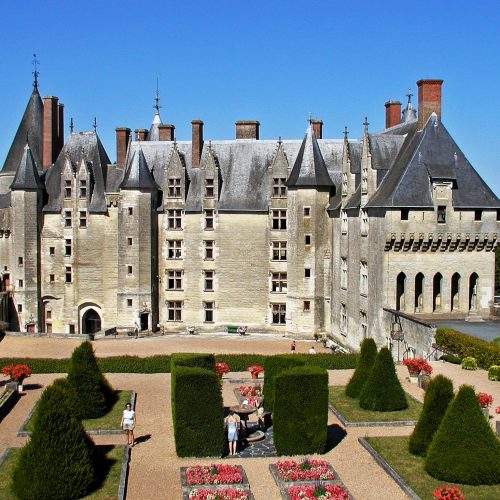
 This whole day in the Loire valley is aimed at combining 3 great features of the area: typical villages and small cities, wine tastings and top class chateaux. 2 beautiful chateaux and local wine sampling (red, white and rosé) in two different venues, including a troglodyte cellar are on today's program! Leaving some time for strolls in the local town and villages as well as personal shopping!
This whole day in the Loire valley is aimed at combining 3 great features of the area: typical villages and small cities, wine tastings and top class chateaux. 2 beautiful chateaux and local wine sampling (red, white and rosé) in two different venues, including a troglodyte cellar are on today's program! Leaving some time for strolls in the local town and villages as well as personal shopping! -

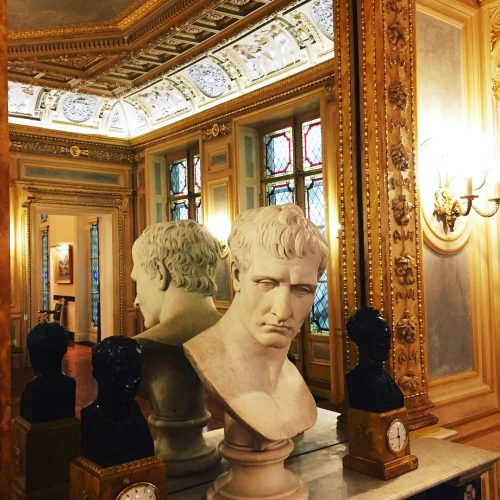 Spend a whole, virtually private day with Napoleon visiting some of its most intimate and lesser known houses. West of Paris, the first one on the itinerary is way off the tourist track and exudes style and history. The chateau has also a strong link to Napoleon's personal life, as his first wife, Empress Joséphine lived and died there. The second palace will take you to the countryside, where rooms have recently been refurbished to exhibit some of the most beautiful decors from the French Emperor's days. Finally, this very special day will uncover a very secret place, where the biggest private collection of Napoleon's objects can be seen in the heart of Paris! Option: fly over Napoleon's palace in a helicopter!
Spend a whole, virtually private day with Napoleon visiting some of its most intimate and lesser known houses. West of Paris, the first one on the itinerary is way off the tourist track and exudes style and history. The chateau has also a strong link to Napoleon's personal life, as his first wife, Empress Joséphine lived and died there. The second palace will take you to the countryside, where rooms have recently been refurbished to exhibit some of the most beautiful decors from the French Emperor's days. Finally, this very special day will uncover a very secret place, where the biggest private collection of Napoleon's objects can be seen in the heart of Paris! Option: fly over Napoleon's palace in a helicopter! -
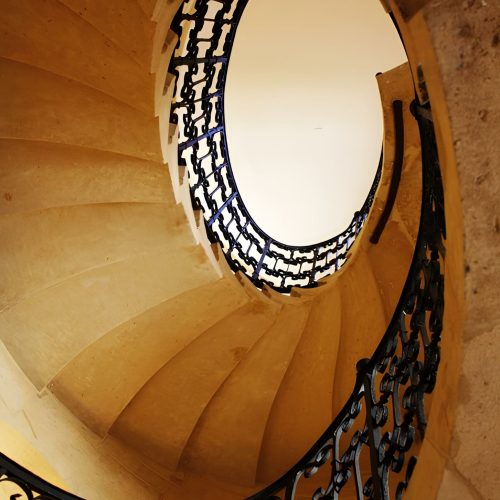
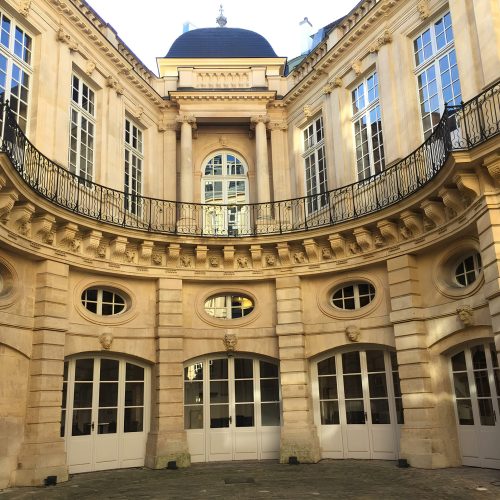 The administrative court of appeal of Paris, located in the hotel de Beauvais, is rarely open to the public. On very special occasion, the court has no session, this is why some reserved areas will be exceptionally open! On the day of the visit, on top of the overall history of the building, we'll be able to admire the magnificent courtyard, the grand staircase, the main court room and special waiting room as well as the rare medieval cellars.
The administrative court of appeal of Paris, located in the hotel de Beauvais, is rarely open to the public. On very special occasion, the court has no session, this is why some reserved areas will be exceptionally open! On the day of the visit, on top of the overall history of the building, we'll be able to admire the magnificent courtyard, the grand staircase, the main court room and special waiting room as well as the rare medieval cellars. -
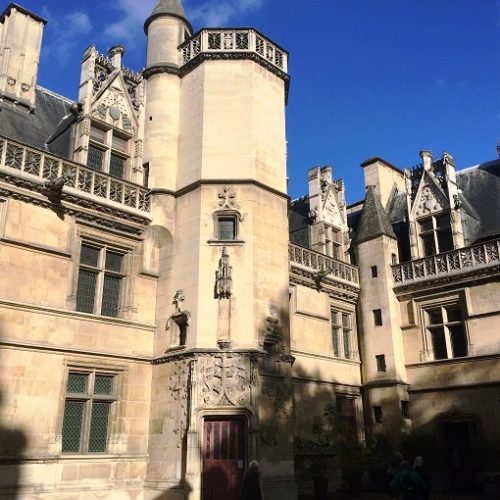
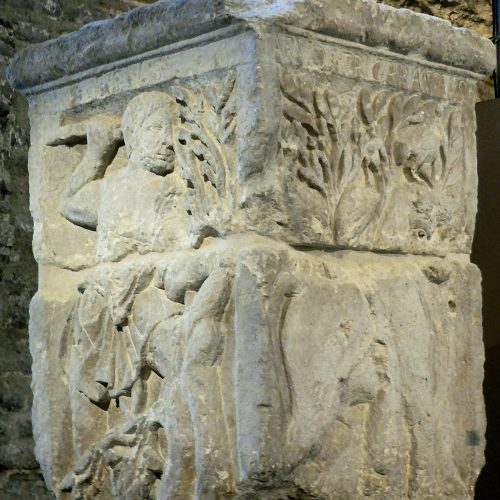 Paris is much older than one might at first think, at least twice as old as Notre Dame. Before the year 1000, there was, in this order: a Gallic settlement, a Roman city, and a Frankish royal capital—visited by people such as Julius Caesar, Julian the Apostate, and Clovis the King of the Franks. Many vestiges of this ancient history are buried today beneath the streets of visible, modern part of town. From the île de la Cité to the ramparts of the 12th arrondissment, we will pass through the Roman Forum and baths before completing the tour at the famous Arenes de Lutece (Lutetia's arenas).
Paris is much older than one might at first think, at least twice as old as Notre Dame. Before the year 1000, there was, in this order: a Gallic settlement, a Roman city, and a Frankish royal capital—visited by people such as Julius Caesar, Julian the Apostate, and Clovis the King of the Franks. Many vestiges of this ancient history are buried today beneath the streets of visible, modern part of town. From the île de la Cité to the ramparts of the 12th arrondissment, we will pass through the Roman Forum and baths before completing the tour at the famous Arenes de Lutece (Lutetia's arenas). -
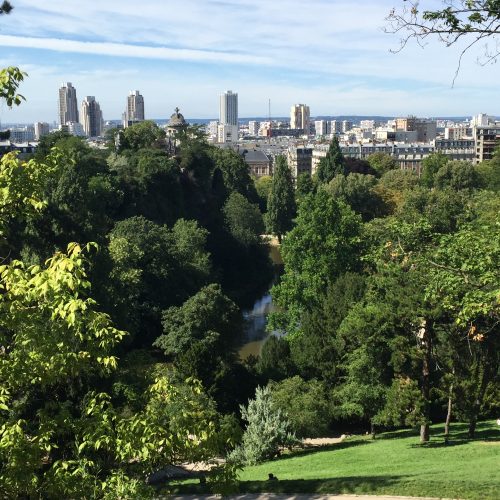
 This walk will uncover a unique place: a small village bordered only with Parisian villas, pedestrian and paved walkways bordered by pretty houses. The whole area surrounded by parks and small gardens. The tour will also take you in one of the last Parisian village, little known to Parisian and hidden in the 19th arrondissement. Nearby, the park of the Buttes Chaumont, created in the 19th century, is considered as the most charming and typically Parisian of all the capital's parks.
This walk will uncover a unique place: a small village bordered only with Parisian villas, pedestrian and paved walkways bordered by pretty houses. The whole area surrounded by parks and small gardens. The tour will also take you in one of the last Parisian village, little known to Parisian and hidden in the 19th arrondissement. Nearby, the park of the Buttes Chaumont, created in the 19th century, is considered as the most charming and typically Parisian of all the capital's parks. -
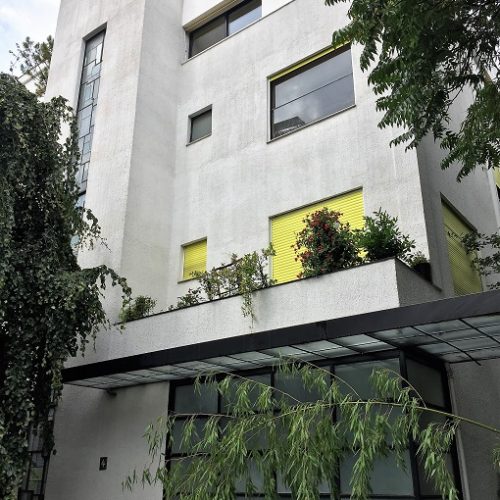
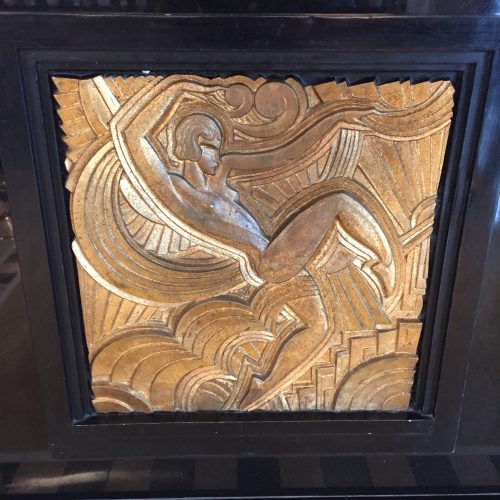 This tour is meant for architecture and interior decoration lovers. A first stretch in Western Paris will recall Art Déco's origins and diffusion, highlighted with several houses built in the same street by key architects. One of these houses will be exceptionally open for a visit of the vast workshop on the ground floor. Just a block away, another amazing place, built by leading 1930's architect Le Corbusier, gives another orientation to modernist style. After a short metro trip, a stop has been arranged in one of the most beautiful and typical restaurants in Paris, rich with anecdotes. Across the street, is another example of Art Deco buildings, directly inspired by American high rise. The end of the tour will take place in a fantastic hotel built as a tribute to the great 1925 Art Déco exhibition, filled with the most refined furniture, frescoes, and decors.
This tour is meant for architecture and interior decoration lovers. A first stretch in Western Paris will recall Art Déco's origins and diffusion, highlighted with several houses built in the same street by key architects. One of these houses will be exceptionally open for a visit of the vast workshop on the ground floor. Just a block away, another amazing place, built by leading 1930's architect Le Corbusier, gives another orientation to modernist style. After a short metro trip, a stop has been arranged in one of the most beautiful and typical restaurants in Paris, rich with anecdotes. Across the street, is another example of Art Deco buildings, directly inspired by American high rise. The end of the tour will take place in a fantastic hotel built as a tribute to the great 1925 Art Déco exhibition, filled with the most refined furniture, frescoes, and decors. -
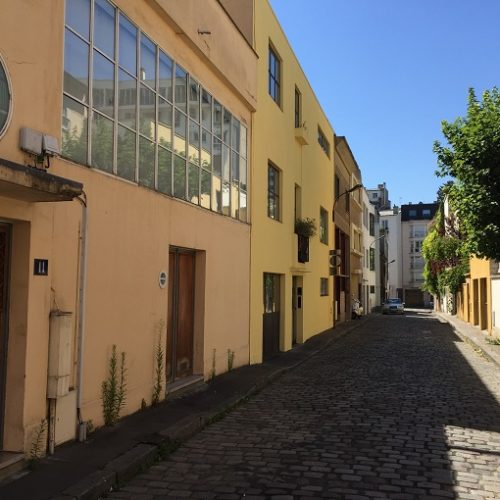
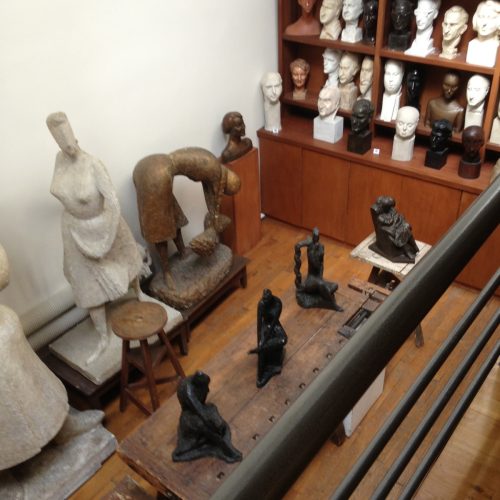 Stroll a few small streets and alleyways around Montsouris park and experience the charm of a neighborhood where one really feel away and far from Paris. Some of the beautiful houses were built for famous artists. Some villas were also used as experimenting new art déco techniques and materials. In a close-by passage, we'll visit the grand house atelier of a sculptor, now turned into a museum after her death (10€ pp).
Stroll a few small streets and alleyways around Montsouris park and experience the charm of a neighborhood where one really feel away and far from Paris. Some of the beautiful houses were built for famous artists. Some villas were also used as experimenting new art déco techniques and materials. In a close-by passage, we'll visit the grand house atelier of a sculptor, now turned into a museum after her death (10€ pp). -
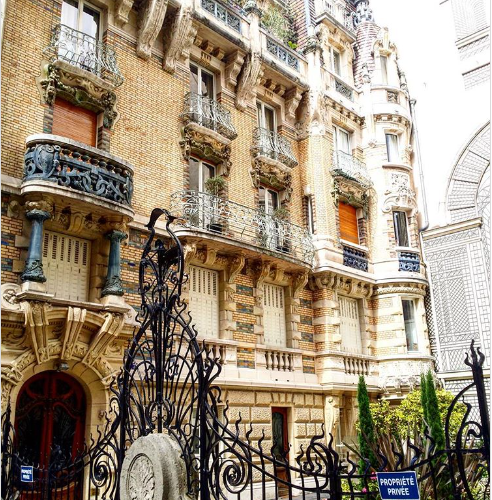
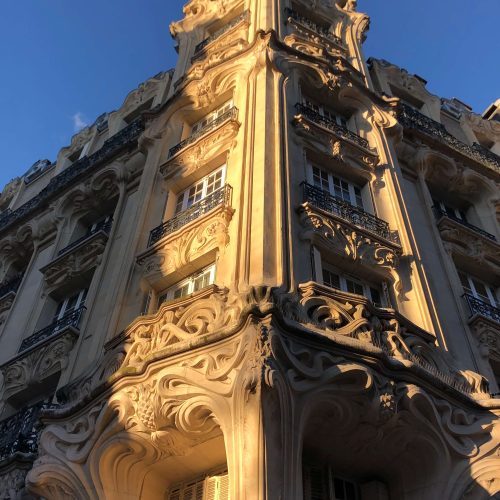 Art Nouveau is a new conception in art that will spread out in Europe between the 1880's up till the First World War, not only in architecture, but also in design and furniture. If many countries will develop their own version, a few architects will in France sign several buildings emblematic and prestigious up to our times. Two routes are proposed to experience the best of Art Nouveau in Paris.
Art Nouveau is a new conception in art that will spread out in Europe between the 1880's up till the First World War, not only in architecture, but also in design and furniture. If many countries will develop their own version, a few architects will in France sign several buildings emblematic and prestigious up to our times. Two routes are proposed to experience the best of Art Nouveau in Paris. -
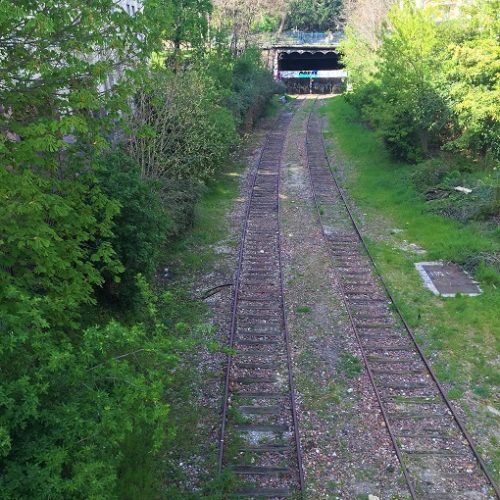
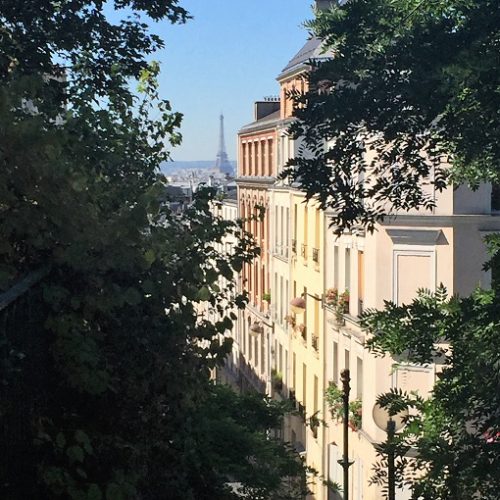 Belleville and Ménilmontant, traditional working class and Parisian areas, have seen a long evolution to now welcome some of the most vibrant and trendy districts of Paris. On top of the most beautiful panorama over Paris, discover artists workshops as well countless street art works. Hidden villas and back alleys lead to pretty squares and architectural beauties hidden behind modern buildings. From the birth place of Edith Piaf to a very colorful food and clothes market, stroll the winding streets of Belleville and encounter a new and true face of Paris.
Belleville and Ménilmontant, traditional working class and Parisian areas, have seen a long evolution to now welcome some of the most vibrant and trendy districts of Paris. On top of the most beautiful panorama over Paris, discover artists workshops as well countless street art works. Hidden villas and back alleys lead to pretty squares and architectural beauties hidden behind modern buildings. From the birth place of Edith Piaf to a very colorful food and clothes market, stroll the winding streets of Belleville and encounter a new and true face of Paris. -

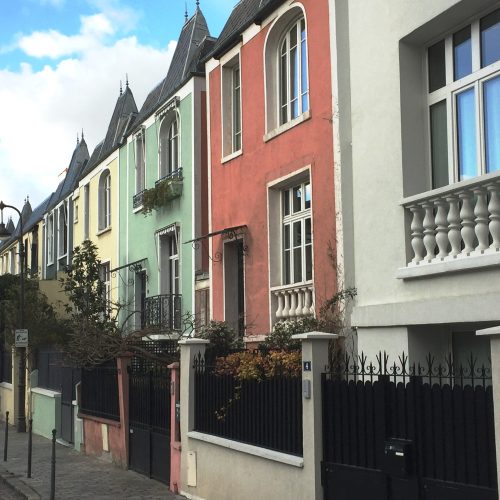 An unforgettable experience is guaranteed as you wander through la Butte aux Cailles, anti-establishment Parisian party district, with it’s restaurants and detached houses that provide an unrivaled Left Bank atmosphere. One of Paris's favorite playgrounds for street artists, the area also boasts of hidden gems and many other peculiarities.
An unforgettable experience is guaranteed as you wander through la Butte aux Cailles, anti-establishment Parisian party district, with it’s restaurants and detached houses that provide an unrivaled Left Bank atmosphere. One of Paris's favorite playgrounds for street artists, the area also boasts of hidden gems and many other peculiarities. -

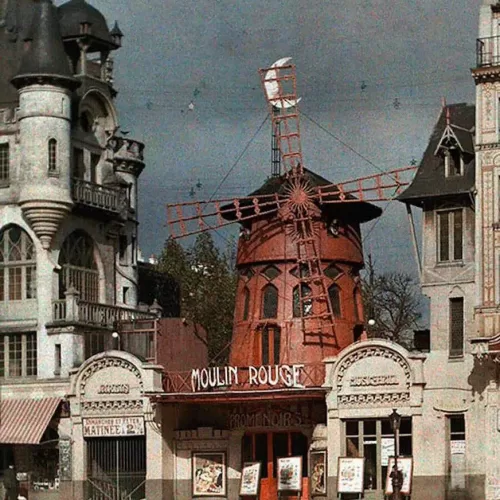 Go back to Montmartre heydays, when dozens of cabarets were lining the Boulevards and people from all over the world flocking there for entertainment! Pictures and music will give you a bright idea of long gone buildings and different type of shows usually on. The tour starts with the small and unusual museum of recorded sound where amazing "talking machines" are showcased, reminding how Montmartre benefited this invention with cafés, dancing halls and cabarets. Learn also how Pigalle became the world famous red light district synonym of entertainment, crime and sex.
Go back to Montmartre heydays, when dozens of cabarets were lining the Boulevards and people from all over the world flocking there for entertainment! Pictures and music will give you a bright idea of long gone buildings and different type of shows usually on. The tour starts with the small and unusual museum of recorded sound where amazing "talking machines" are showcased, reminding how Montmartre benefited this invention with cafés, dancing halls and cabarets. Learn also how Pigalle became the world famous red light district synonym of entertainment, crime and sex. -
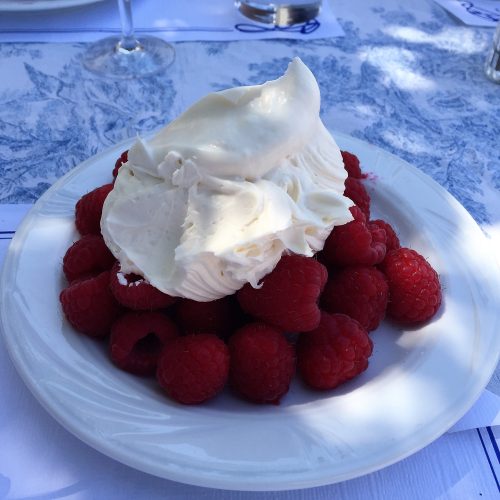
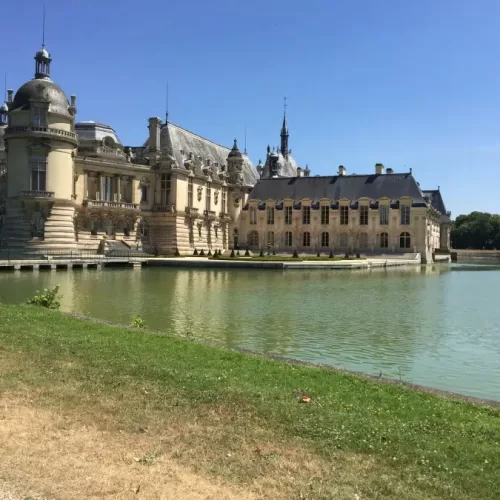 Take a day trip by private minibus or train to the glitzy Chantilly estate, with collection from and drop off at your hotel. First, you will visit the magnificent castle with your expert guide, its treasures and extensive collections. The private apartments of the Duke and Duchess of Aumale can also be shown on request. Then, we will cross the extensive grounds, (electric car on option) and have lunch in the charming restaurant housed in the 18th century mill. Next, we will visit the Museum of the Horse, located in the Prince de Condé’s beautiful stables, before watching an equestrian show.
Take a day trip by private minibus or train to the glitzy Chantilly estate, with collection from and drop off at your hotel. First, you will visit the magnificent castle with your expert guide, its treasures and extensive collections. The private apartments of the Duke and Duchess of Aumale can also be shown on request. Then, we will cross the extensive grounds, (electric car on option) and have lunch in the charming restaurant housed in the 18th century mill. Next, we will visit the Museum of the Horse, located in the Prince de Condé’s beautiful stables, before watching an equestrian show. -
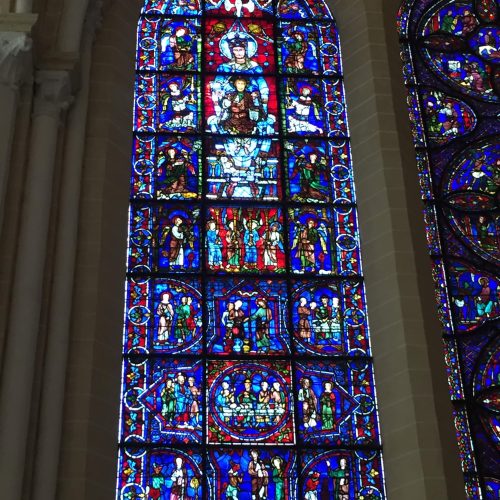
 Just under an hour by train from Paris, Chartres is a great and convenient getaway for a day out of Paris. The cathedral, celebrated by many writers and artists, is one of the most fundamental in medieval Gothic art. The town, with its medieval and lively center, offers multiple attractions for strolling and shopping. Finally, the tour will end with the discovery of the famous flower market (3 days a week).
Just under an hour by train from Paris, Chartres is a great and convenient getaway for a day out of Paris. The cathedral, celebrated by many writers and artists, is one of the most fundamental in medieval Gothic art. The town, with its medieval and lively center, offers multiple attractions for strolling and shopping. Finally, the tour will end with the discovery of the famous flower market (3 days a week). -

 Step into Wenzou, via Hanoi, Pnom-phen or Vientiane at the nearby Choisy triangle, the largest of the four Asian districts of Paris. Many expatriates from former French colonies in Asia own businesses around the commercial area of Olympiades, the heart of the area that has now become the largest Chinatown in Europe.
Step into Wenzou, via Hanoi, Pnom-phen or Vientiane at the nearby Choisy triangle, the largest of the four Asian districts of Paris. Many expatriates from former French colonies in Asia own businesses around the commercial area of Olympiades, the heart of the area that has now become the largest Chinatown in Europe. -
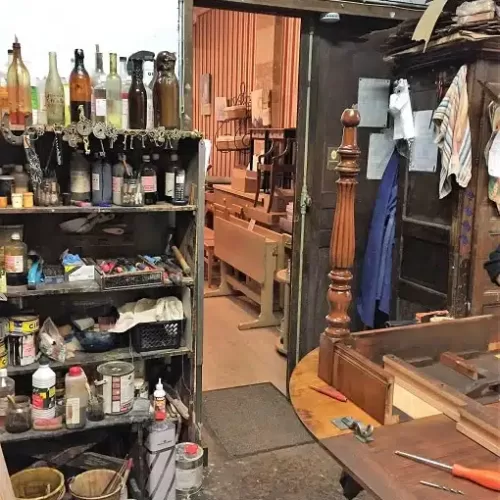
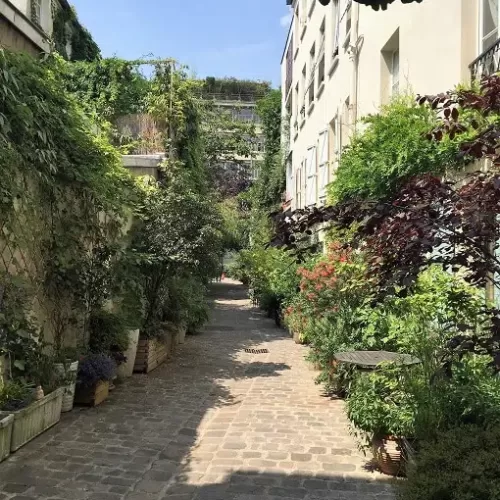 The Faubourg Saint Antoine has gradually developed around the Royal Abbey of Saint Antoine des Champs, but the bulk of its activities developed when the wood craftsmen settled in this neighborhood. In the early 18th century, over 500 carpenters’ and cabinet makers’ shops thrived in the area thanks to royal commissions and the activity of the abbey. These traditions still exist; although manufacturers are increasingly rare to find, replaced by promoters' lofts or convenient stores. A meeting is organized with one of the last woodcrafters in his hidden workshop!
The Faubourg Saint Antoine has gradually developed around the Royal Abbey of Saint Antoine des Champs, but the bulk of its activities developed when the wood craftsmen settled in this neighborhood. In the early 18th century, over 500 carpenters’ and cabinet makers’ shops thrived in the area thanks to royal commissions and the activity of the abbey. These traditions still exist; although manufacturers are increasingly rare to find, replaced by promoters' lofts or convenient stores. A meeting is organized with one of the last woodcrafters in his hidden workshop! -
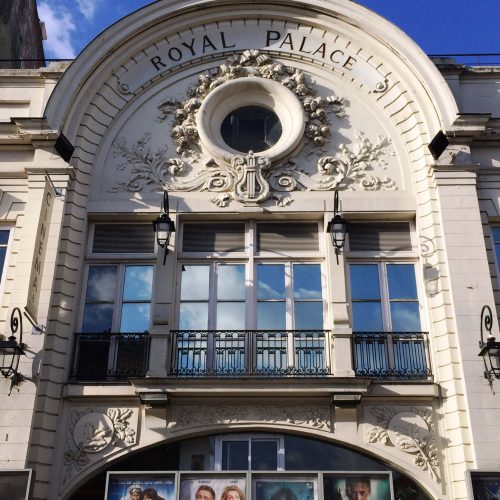
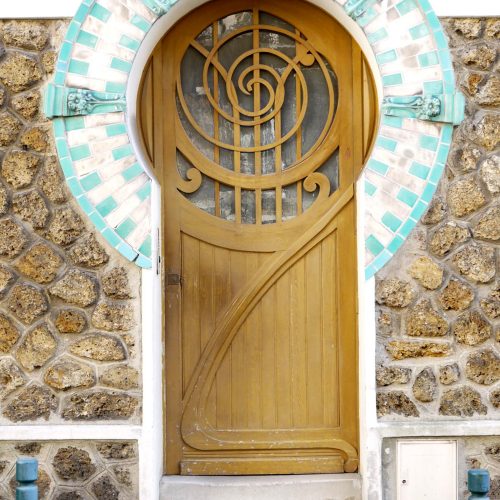 The route then heads for the heights of Nogent, where the town center is located. A number of unexpectedly charming suburban houses and a lovely park lie along the way. The main street in the center is interesting on several levels. First and foremost, its ancient heritage is impressive. What's more, teeming with shops and restaurants of all kinds, the town center is one of the busiest in eastern Paris. Through its squares and monuments, the tour will explore the history of this town, which at the beginning of the 20th century was home to one of the largest Italian communities in the Paris region. Finally, the walk ends in front of the Royal Palace cinema, a landmark of Nogent sur Marne built in the early 1920s and a Mecca of the Parisian music hall of that era.
The route then heads for the heights of Nogent, where the town center is located. A number of unexpectedly charming suburban houses and a lovely park lie along the way. The main street in the center is interesting on several levels. First and foremost, its ancient heritage is impressive. What's more, teeming with shops and restaurants of all kinds, the town center is one of the busiest in eastern Paris. Through its squares and monuments, the tour will explore the history of this town, which at the beginning of the 20th century was home to one of the largest Italian communities in the Paris region. Finally, the walk ends in front of the Royal Palace cinema, a landmark of Nogent sur Marne built in the early 1920s and a Mecca of the Parisian music hall of that era. -
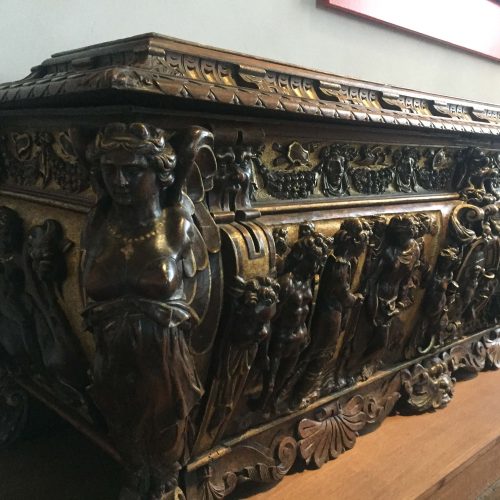
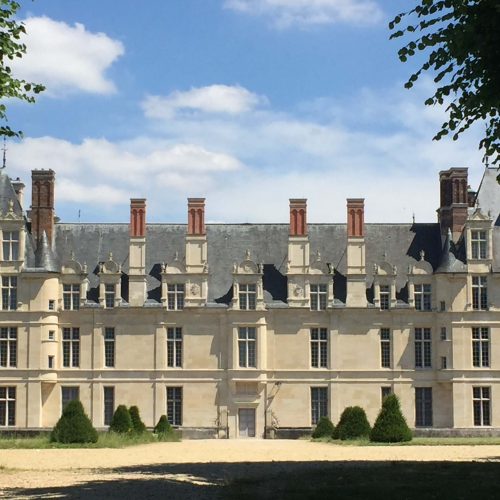 The day in Ecouen will start with a 20 minutes train ride from Paris followed by a walk through the charming Montmorency forest. This leads to the magnificent 16th century castle housing the National Renaissance Museum. Some of the pieces of furniture, objects or tapestries displayed in the beautifully restored rooms are unique and world class. After the chateau, an art tour in the city center will highlight several artists choosing Ecouen as their residence for inspiration. One of them was Mary Cassatt. A few paintings will also be exceptionally out for a look at to round up the art trail in a local center, before going back to the station through the woods.
The day in Ecouen will start with a 20 minutes train ride from Paris followed by a walk through the charming Montmorency forest. This leads to the magnificent 16th century castle housing the National Renaissance Museum. Some of the pieces of furniture, objects or tapestries displayed in the beautifully restored rooms are unique and world class. After the chateau, an art tour in the city center will highlight several artists choosing Ecouen as their residence for inspiration. One of them was Mary Cassatt. A few paintings will also be exceptionally out for a look at to round up the art trail in a local center, before going back to the station through the woods. -
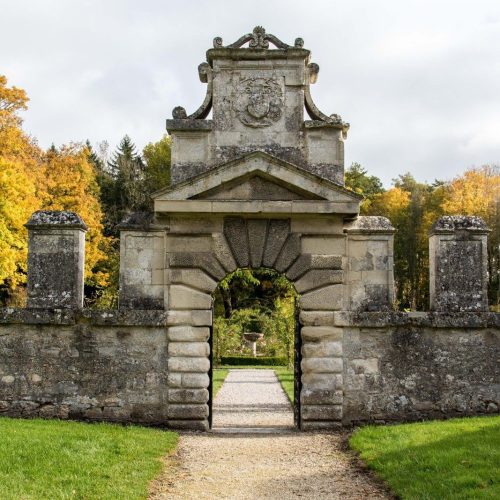
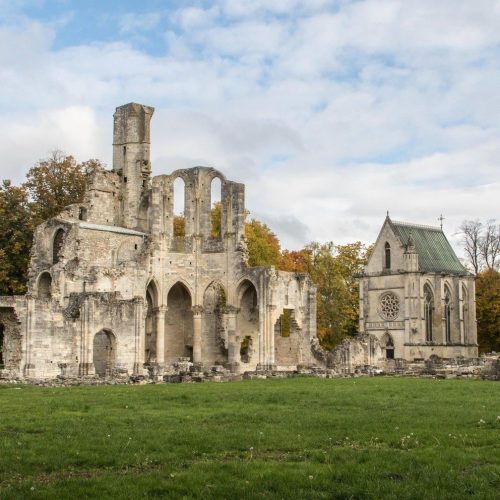 The enchanting abbey of Chaalis offers a fantastic trip back into the history ot one of the greatest and renown abbeys in the country. The domain includes a large park, the ruins of the old abbey church, a superb chapel, fantastic 14th century frescoes, a beautiful rose garden and the Jacquemart André museum installed in the 18th century abbey church, which brings together works from different eras, with invaluable art works.
The enchanting abbey of Chaalis offers a fantastic trip back into the history ot one of the greatest and renown abbeys in the country. The domain includes a large park, the ruins of the old abbey church, a superb chapel, fantastic 14th century frescoes, a beautiful rose garden and the Jacquemart André museum installed in the 18th century abbey church, which brings together works from different eras, with invaluable art works. -
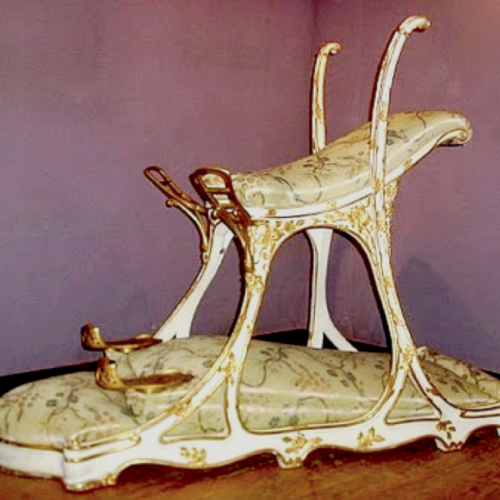
 A stroll around the streets of Pigalle, the world famous ancient red light district of Paris will show you hidden tracks and buildings linked to the love business. With around 10 000 prostitutes, cabarets and erotic shows in Paris at the end of the nineteenth century, the capital of France could attract visitors eager to blend in a risqué atmosphere far from home.
A stroll around the streets of Pigalle, the world famous ancient red light district of Paris will show you hidden tracks and buildings linked to the love business. With around 10 000 prostitutes, cabarets and erotic shows in Paris at the end of the nineteenth century, the capital of France could attract visitors eager to blend in a risqué atmosphere far from home. -
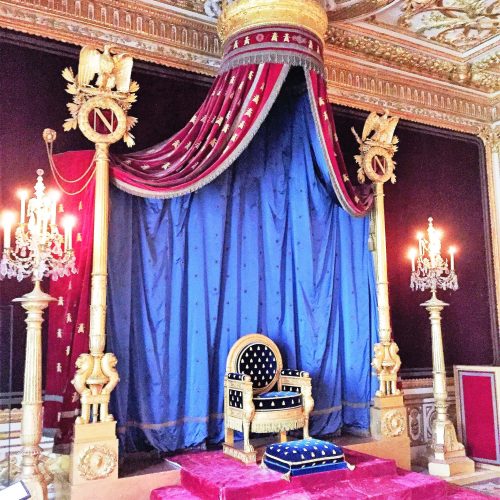
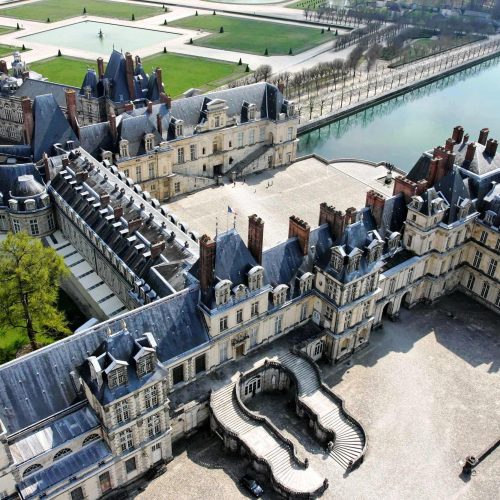 Welcome to "the true home of the Kings," said Napoleon of Fontainebleau Palace, a magical place to discover! You’ll arrive near the Chateau’s incredible gardens, and then proceed to visit the Palace, taking in all its treasured nooks and famous anecdotes. Our minibus will then take us to have lunch in the forest of Fontainebleau, whose enchanting rocks hold numerous legends. The day will continue with the visit to Barbizon, a village known for Impressionist painters who lived there. Finally, before returning to Paris, discover a truly extraordinary treasure: a sea of sand within the forest of Fontainebleau.
Welcome to "the true home of the Kings," said Napoleon of Fontainebleau Palace, a magical place to discover! You’ll arrive near the Chateau’s incredible gardens, and then proceed to visit the Palace, taking in all its treasured nooks and famous anecdotes. Our minibus will then take us to have lunch in the forest of Fontainebleau, whose enchanting rocks hold numerous legends. The day will continue with the visit to Barbizon, a village known for Impressionist painters who lived there. Finally, before returning to Paris, discover a truly extraordinary treasure: a sea of sand within the forest of Fontainebleau. -

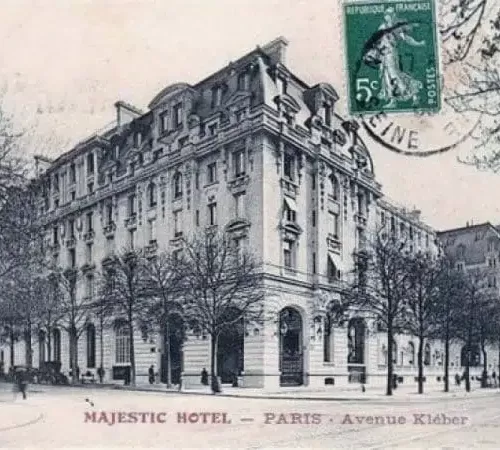 This route through the 16th arrondissement aims to explore the places and history linked to the German Occupation through the formidable security and police services as well as their French auxiliaries. The tour will also reveal the roles of several characters, French or German, notoriously known for their activities during these events.
This route through the 16th arrondissement aims to explore the places and history linked to the German Occupation through the formidable security and police services as well as their French auxiliaries. The tour will also reveal the roles of several characters, French or German, notoriously known for their activities during these events.
